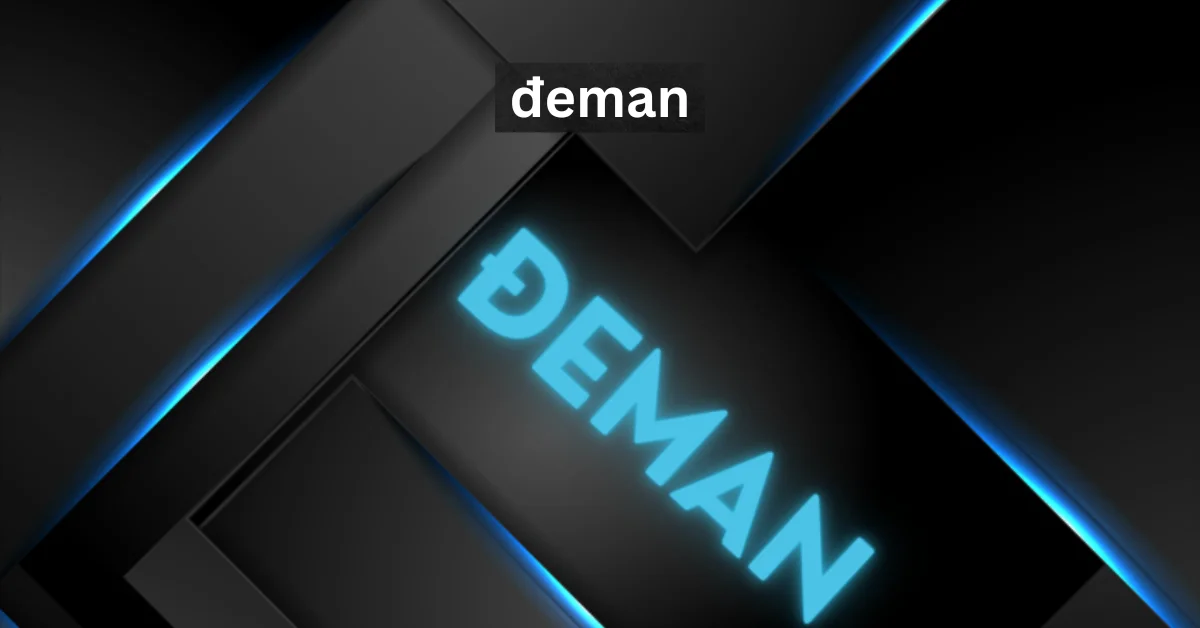Blog
Understanding 127.0.0.1:62893 in Local Networking
Published
1 month agoon
By
Rocklord
In the world of networking and web development, certain numbers hold significant importance. One such combination is 127.0.0.1:62893, which represents a unique connection between an IP address and a port number on a computer. To the untrained eye, this may seem like a random string of digits. But for those working in IT, development, or cybersecurity, this combination is integral to running local tests and simulating various network processes.
Understanding how 127.0.0.1, commonly known as localhost, and a specific port number like 62893 work together is essential for anyone working with servers or developing software.
What is 127.0.0.1?
At the heart of the combination 127.0.0.1:62893 is 127.0.0.1, also known as the localhost IP address. This is a reserved IP used by your computer to refer to itself. Instead of sending network traffic out into the world, this IP address loops back internally to your own device.
For example, if you set up a web server on your computer and want to test it without exposing it to the internet, you’d use 127.0.0.1. This address ensures that the traffic remains confined to your machine, which is essential for development and debugging.
The localhost address is reserved for private testing and cannot be accessed from the outside. Any traffic that uses 127.0.0.1 stays on the machine it originates from. This makes it invaluable for developers who want to ensure their software is functioning correctly before deploying it to a live environment.
The Importance of Port 62893
Every IP address, including 127.0.0.1, requires a port number to communicate with various services. Ports function as channels, directing traffic to specific processes or applications on your machine. When you type in 127.0.0.1:62893, you’re telling your computer to access the IP address 127.0.0.1 and the specific port 62893.
Port numbers range from 0 to 65535, and they are often used for different types of services. For instance, port 80 is typically used for web traffic (HTTP), while port 443 is reserved for secure web traffic (HTTPS). Port 62893, while not a well-known reserved port, could be used for custom or local services, often designated for personal applications or temporary testing servers.
If a developer sets up a web application on their local machine, they might assign it to port 62893 to ensure it doesn’t conflict with other services or software running on more common ports like 80 or 443.
How 127.0.0.1:62893 is Used in Web Development
When building and testing a website or application, it’s common for developers to use a local server on 127.0.0.1 paired with a custom port number, like 62893. This allows developers to test applications in a controlled environment without deploying the code to a live server.
Here’s an example scenario:
A web developer is building a new application and needs to ensure it works correctly before releasing it to the public. Instead of uploading their code to a live server, they create a local server using 127.0.0.1. They assign port 62893 to this server to avoid conflicts with other applications that might already be using default ports. By accessing 127.0.0.1:62893 in a web browser, the developer can interact with their application in real-time, making any necessary adjustments before the final deployment.
This process is critical for ensuring that the application works as expected and is free of bugs or errors before being exposed to real users.
Security Implications of 127.0.0.1 and Custom Ports
Since 127.0.0.1 confines traffic to the local machine, it is considered secure for testing and development purposes. No external users can access a service running on 127.0.0.1 unless the developer explicitly allows it by configuring external access. This makes it a safe environment for sensitive applications or experiments that aren’t ready for public exposure.
However, it’s important to configure your local services correctly. Using a random port like 62893 can help avoid conflicts, but developers must ensure that their firewalls and security settings don’t inadvertently expose local services to external threats. Misconfigured ports or unintended open access could potentially allow malicious users to gain entry to sensitive information.
How to Access 127.0.0.1:62893 in Your Browser
Accessing 127.0.0.1:62893 is quite simple:
- Ensure that a local service or server is running on port 62893.
- Open your web browser.
- Type 127.0.0.1:62893 into the address bar and hit Enter.
If a service is running on that port, the relevant web page or application will load. If not, you’ll typically receive a browser error, indicating that the connection couldn’t be established. This is a good sign that either no service is running on that port or that it isn’t properly configured.
Common Use Cases for 127.0.0.1:62893
While 127.0.0.1:62893 might sound technical, it is used in many everyday scenarios by developers, testers, and system administrators. Here are a few common applications:
- Web Development Testing: As mentioned, developers frequently use custom port numbers like 62893 on 127.0.0.1 to run local instances of web applications.
- Network Troubleshooting: System administrators often use localhost to troubleshoot and diagnose network issues without exposing services to external networks.
- Database Testing: Many local databases run on localhost, with unique port numbers assigned to separate instances. For example, a local MySQL server might run on 127.0.0.1:3306, while another service might use 127.0.0.1:62893.
- Gaming Servers: Some local multiplayer games allow users to host servers on their own machine, using 127.0.0.1 and custom port numbers to connect locally.
Conclusion
127.0.0.1:62893 represents a powerful combination for anyone involved in web development, network administration, or software testing. It allows developers to run services and test applications in a secure, local environment before exposing them to the outside world. Whether you’re building a new app, troubleshooting a network issue, or simply experimenting with code, understanding how 127.0.0.1 and custom ports like 62893 work can help you navigate the complexities of local networking with ease.
FAQs
What is the purpose of using 127.0.0.1?
127.0.0.1 is the IP address used to refer to the local machine. It is primarily used for testing, development, and diagnostics by confining network traffic to the local device.
How does port 62893 work with 127.0.0.1?
Port 62893 is a custom port used alongside 127.0.0.1 to access specific local services or applications. It allows developers to run different services on unique channels.
Is 127.0.0.1 secure?
Yes, 127.0.0.1 is secure for local testing since it restricts traffic to the device itself. External users cannot access services running on 127.0.0.1 unless the machine is explicitly configured for external access.
Why do developers use random port numbers like 62893?
Developers use random port numbers like 62893 to avoid conflicts with commonly used ports (e.g., 80, 443). This ensures that different applications can run simultaneously without interfering with each other.
How do I know if port 62893 is open?
You can check if a port is open by running a local service on it and attempting to connect via a web browser or command-line tool like Telnet. If no connection is made, the port may not be in use or configured correctly.
Can I access 127.0.0.1 from another device?
No, 127.0.0.1 is reserved for local traffic. To allow external access, you would need to configure your server with your machine’s external IP address instead of localhost.
You may like
Blog
Katerina Goltzwart: Pioneer of Modern Psychology and Mental Health Advocacy
Published
1 week agoon
November 13, 2024By
Rocklord
Katerina Goltzwart is widely regarded as one of the most influential figures in contemporary psychology and mental health advocacy. With her innovative research, extensive publications, and dedication to understanding human behavior, she has helped to reshape the field of psychology, introducing methods and insights that have impacted mental health treatment and improved the lives of countless individuals worldwide. This article explores her contributions, examining her journey, research findings, and the long-lasting impact she has had on the mental health landscape.
Early Life and Educational Background
Born in the early 1970s in Berlin, Germany, Katerina Goltzwart demonstrated an interest in human behavior from a young age. Her inquisitive nature led her to question and explore human thought processes, social interactions, and individual development. Growing up in a city steeped in history and shaped by the events of the Cold War, she developed a keen awareness of social and political dynamics, which fueled her desire to understand how external factors influence mental health.
Goltzwart pursued her undergraduate degree in Psychology at the University of Heidelberg, one of Germany’s oldest and most prestigious institutions. After completing her bachelor’s degree, she attended the University of Cambridge for her postgraduate studies, where she specialized in clinical psychology. This academic foundation, combined with her multicultural background, prepared her to work across borders and become a global leader in the field.
The Rise of Cognitive-Behavioral Therapy and Goltzwart’s Influence
One of Goltzwart’s most impactful contributions to psychology came from her work in cognitive-behavioral therapy (CBT). While CBT was already a well-established form of treatment, Goltzwart’s research focused on its application in diverse cultural contexts. She pioneered studies examining how cultural backgrounds can affect a person’s response to CBT, emphasizing the need for culturally sensitive approaches in therapeutic settings.
Her findings revealed that adapting therapeutic methods to consider clients’ cultural and social backgrounds could lead to significantly better outcomes. This work transformed CBT from a one-size-fits-all approach into a more individualized practice, expanding its effectiveness globally. Her culturally adaptive model of CBT is now taught in major institutions worldwide, making her a foundational figure in advancing cross-cultural psychology.
Research on Trauma and Post-Traumatic Growth
Goltzwart has also made groundbreaking contributions in the areas of trauma and resilience. Her research on trauma response mechanisms and post-traumatic growth has illuminated how individuals can not only recover from traumatic events but also grow and gain strength from them. Inspired by her own experiences with hardship, Goltzwart wanted to explore how adversity could lead to personal growth.
Her studies revealed that while trauma can be debilitating, it also holds the potential for transformative change, often resulting in increased resilience, new perspectives, and personal growth. Her concept of “adaptive resilience” emphasizes that mental health practitioners should not only focus on alleviating trauma symptoms but should also encourage individuals to leverage their experiences for self-improvement. This shift in focus from mere survival to thriving after trauma has changed the way therapists approach post-traumatic treatment, emphasizing empowerment rather than simply healing.
Mental Health Advocacy and Global Outreach
Apart from her academic and clinical work, Katerina Goltzwart is also a passionate mental health advocate. Recognizing that mental health issues are often stigmatized, particularly in underrepresented communities, Goltzwart has used her platform to promote awareness, break down barriers, and reduce the stigma associated with seeking mental health treatment. She has spoken at numerous international conferences, TEDx events, and universities, spreading a message that mental health is as vital as physical health.
In collaboration with organizations like the World Health Organization (WHO) and UNICEF, Goltzwart has worked on programs aimed at making mental health care accessible to marginalized populations. She has been instrumental in establishing community-based mental health programs in various countries, particularly in regions where mental health resources are limited. Her initiatives often focus on training local caregivers, thus creating a sustainable mental health support network in underserved areas.
Contributions to Psychological Literature
Goltzwart’s prolific writing has played a crucial role in disseminating her findings to both academic and general audiences. Her published works, which include academic papers, books, and articles, cover a range of topics, from trauma and resilience to the impact of social media on mental health. Her most acclaimed book, From Struggle to Strength: A New Approach to Post-Traumatic Growth, has become a staple in psychology curricula worldwide. In it, she explains her theories on resilience and provides practical advice for both mental health practitioners and individuals facing trauma.
Goltzwart has also contributed to numerous psychology journals, where she has highlighted the importance of preventative mental health care. She argues that mental health systems should not only focus on treatment but also invest in preventive measures such as education, early intervention, and community support. Her writings have significantly influenced mental health policies in many countries, encouraging policymakers to consider preventive care as a critical aspect of mental health services.
Pioneering Digital Mental Health Solutions
Recognizing the potential of technology to make mental health care more accessible, Goltzwart has embraced digital platforms and tools to provide mental health support to a broader audience. She was one of the first psychologists to advocate for teletherapy, especially during times of crisis, such as the COVID-19 pandemic. Her early adoption and promotion of online therapy have helped normalize teletherapy as a legitimate and effective way to deliver mental health care.
In partnership with tech companies, Goltzwart has also been involved in the development of mental health applications that use artificial intelligence to offer preliminary support and monitor users’ mental health. These applications use AI-driven algorithms to identify signs of anxiety, depression, and other mental health concerns, alerting users when they may need to seek professional help. By merging psychology with technology, she has created a model that allows for early intervention, helping individuals access resources before reaching a point of crisis.
Honors and Recognition
Throughout her career, Katerina Goltzwart has received numerous awards and honors in recognition of her contributions to psychology and mental health advocacy. She was awarded the prestigious Wilhelm Wundt Award for Psychology Innovation, which celebrates her pioneering work in trauma research. Additionally, she has received honors from various mental health organizations for her humanitarian work and her efforts to destigmatize mental health treatment.
Goltzwart is also a fellow of the American Psychological Association and the European Federation of Psychologists’ Associations. Her membership in these esteemed organizations speaks to her influence within the global psychology community. In 2020, she was invited to serve on the United Nations Mental Health Task Force, where she advises on policies and programs aimed at improving global mental health access.
Katerina Goltzwart’s Legacy
Katerina Goltzwart’s contributions to psychology and mental health have left a lasting legacy. By integrating culturally adaptive techniques into CBT, advancing the concept of post-traumatic growth, and leading mental health advocacy initiatives worldwide, she has reshaped the mental health field. Her commitment to expanding access to mental health resources, particularly for marginalized communities, has paved the way for a more inclusive approach to mental health care.
Furthermore, her advocacy for digital mental health solutions has brought mental health support into the 21st century, demonstrating that technology can be a valuable tool for promoting mental well-being. Her work has not only improved the lives of those she has directly helped but has also inspired a new generation of psychologists and mental health advocates to continue advancing mental health care for all.
Conclusion
Katerina Goltzwart’s impact on psychology is undeniable. Her research, advocacy, and writings have transformed how mental health is perceived and treated. From her pioneering work in cross-cultural CBT and trauma resilience to her influence on digital mental health solutions, Goltzwart has consistently been at the forefront of innovation. Her legacy serves as a testament to the importance of compassion, resilience, and adaptability in addressing mental health challenges, and she continues to inspire mental health professionals to approach their work with empathy, understanding, and an unwavering commitment to making a difference.
Through her tireless efforts, Katerina Goltzwart has made an indelible mark on the mental health field, and her influence will continue to shape the future of psychology for years to come.
Blog
Understanding “Đêman”: A Comprehensive Guide
Published
1 week agoon
November 12, 2024By
Rocklord
The term “Đêman” has started to gain attention in certain online and cultural circles, but it can be a bit ambiguous depending on the context in which it’s used. To understand this term fully, we need to explore its roots, its usage in various languages and cultures, and how it has evolved in popular discourse. In this article, we will break down the meaning of “Đêman,” its significance, and common questions surrounding it.
What is “Đêman”?
“Đêman” is a term that appears to have multiple layers of meaning depending on the context, and it might be a regional expression, an internet meme, or even a play on words. Below are the main areas where the term is most commonly used or understood.
1. Vietnamese Language Usage
In the Vietnamese language, “Đêman” (pronounced similarly to “demon” in English) can sometimes be used as a slang term to describe something extreme, something out of the ordinary, or even something intimidating. Its usage can be likened to referring to a person or an event as being “wild” or “over-the-top.” In certain cases, it might even be used in a humorous or exaggerated way to describe an unbelievable situation or character trait.
2. Online Culture and Memes
In internet slang, particularly within Vietnamese social media spaces, the term “Đêman” is often used in an ironic or humorous context. It is frequently associated with a specific type of edgy, over-the-top meme culture, often portraying something exaggeratedly bad or overly dramatic.
Sometimes, “Đêman” can be used in a satirical or mocking way to call out someone’s actions, personality, or even something related to pop culture. The term is often paired with other slang to express feelings of disbelief, shock, or humorous awe.
3. Influence of “Demon”
It is important to note that the word “Đêman” is a variation or a localized spelling of “demon.” The influence of Western media, where the term “demon” has been widely used in entertainment and culture (such as in video games, movies, and books), might have led to the adoption of the term “Đêman” in Vietnamese-speaking communities. However, its meaning has evolved into something more informal, colloquial, and context-dependent.
Common Uses of “Đêman”
Below are some common ways “Đêman” might be used in conversation or online exchanges:
- Exaggeration or Emphasis
When describing something impressive or extreme, people might use “Đêman” to express their amazement. For example:- “Cái video này Đêman quá!” (This video is just insane!)
- Mocking or Criticism
In a humorous or sarcastic context, “Đêman” can be used to call out something that is overly dramatic, wrong, or ridiculous. For example:- “Cậu ấy làm chuyện này, thật là Đêman!” (What he did is just ridiculous!)
- Pop Culture Reference
Fans of specific games, movies, or online communities may use the term to refer to iconic characters or events. It can be used to describe something that fits the stereotypical image of a demon-like force or entity, often with a comedic twist.
FAQs
1. What does “Đêman” mean?
“Đêman” is a Vietnamese slang term derived from the word “demon.” It is typically used in informal contexts to describe something extreme, intense, or exaggerated, sometimes with a humorous or ironic connotation.
2. Is “Đêman” a bad word?
“Đêman” is not inherently offensive, but its tone can vary depending on the context. It can be used to describe something shocking, funny, or extraordinary, but it may also be used to mock or criticize in a playful or sarcastic manner. It is not a formal or respectful term and is generally considered slang.
3. How is “Đêman” used in sentences?
Here are a few examples of how “Đêman” might be used:
- “Đêm qua anh ta chơi game đến sáng, Đêman quá!” (Last night he played games until morning, that’s insane!)
- “Bộ phim này thật sự Đêman!” (This movie is truly wild!)
4. Can “Đêman” be used in formal situations?
No, “Đêman” is a slang term and should not be used in formal settings. It’s more appropriate in casual conversations, particularly among younger people or those familiar with online meme culture.
5. Is “Đêman” used only in Vietnam?
While “Đêman” originates from Vietnam, the concept of using demon-related slang in various cultures can be found globally. The word may not be widely known outside Vietnamese-speaking communities, but it has caught on in certain internet subcultures and meme circles.
6. Are there any similar slang words to “Đêman”?
Yes, there are other slang terms in Vietnamese and internet culture that convey similar meanings of exaggeration or extremity. For example, the word “khủng” (meaning “huge” or “powerful”) might also be used in contexts to describe something extreme or impressive. In meme culture, other terms like “bá đạo” (meaning “crazy” or “op” for “overpowered”) also carry similar connotations.
7. Can I use “Đêman” in a positive way?
Yes, “Đêman” can be used in a positive or neutral way, especially when describing something impressive, exciting, or awe-inspiring. The word is most often used to emphasize the extremity or intensity of something in a positive light, but it can also have negative or critical connotations depending on tone and context.
Conclusion
“Đêman” is a versatile and evolving slang term rooted in the Vietnamese language that reflects the influence of both local culture and global internet memes. While it originates from the word “demon,” its meaning has shifted to describe anything that is intense, exaggerated, or out of the ordinary. Like many slang terms, its use depends heavily on context, tone, and the relationship between speakers.
Whether you’re chatting online or discussing the latest internet meme, understanding terms like “Đêman” helps you better navigate the cultural landscape of modern language. Just remember, as with all slang, knowing when and how to use it is key to ensuring you don’t unintentionally offend or confuse anyone.
Blog
Süberlig: The Extraordinary Fusion of Tradition
Published
2 weeks agoon
November 7, 2024By
Rocklord
Süberlig is a multifaceted term deeply rooted in Turkish culture, encompassing both a cherished culinary dish and a mythical concept. This article delves into the various aspects of Süberlig, exploring its rich history, cultural significance, and modern adaptations. Understanding Süberlig offers a glimpse into Turkish culinary heritage and the evolving nature of traditional foods in contemporary society.
The Culinary Delight of Süberlig
Traditional Süberlig: A Taste of Turkish Heritage
At its core, Süberlig is a traditional Turkish stew, primarily made from chickpeas, tomatoes, peppers, onions, and a blend of local spices. This vegetarian dish is celebrated for its simplicity, rich flavors, and nutritional value. Traditionally, Süberlig is prepared using seasonal and locally sourced ingredients, reflecting the Turkish emphasis on fresh, wholesome food.
Modern Adaptations: Evolving with the Times
In recent years, Süberlig has evolved to cater to modern dietary preferences and culinary trends. Chefs have introduced ingredients like lentils, quinoa, and a variety of legumes to enhance its nutritional profile. These modern adaptations maintain the essence of Süberlig while making it more appealing to a global audience. The incorporation of international spices and cooking techniques has further broadened its flavor palette, making Süberlig a versatile dish that bridges traditional and contemporary culinary worlds.
Health and Wellness: The Nutritional Powerhouse
Nutrient-Rich Ingredients
One of the reasons Süberlig has gained popularity is its health benefits. The dish is packed with nutrients from its plant-based ingredients, making it a favorite among health-conscious individuals. Chickpeas, the primary ingredient, are a great source of protein, fiber, and essential vitamins and minerals. The addition of vegetables and spices not only enhances the flavor but also adds a variety of nutrients, making Süberlig a balanced and wholesome meal.
Sustainable and Eco-Friendly Cooking
Süberlig’s emphasis on using locally sourced and seasonal produce aligns with modern sustainability practices. By supporting local farmers and reducing the carbon footprint associated with food transportation, Süberlig promotes eco-friendly cooking. Furthermore, the dish’s vegetarian nature contributes to a lower environmental impact compared to meat-based dishes, making it a sustainable choice for environmentally conscious consumers.
Cultural Significance: Süberlig in Turkish Folklore
Mythical Süberlig: The Guardian of Wilderness
In addition to its culinary importance, Süberlig holds a unique place in Turkish folklore. Mythical Süberlig is depicted as a guardian of the wilderness, embodying the mysteries of nature and the spirit of the wild. This dual identity highlights the deep connection between Turkish cuisine and cultural narratives, enriching the experience of enjoying Süberlig as more than just a meal.
Community and Celebration
Süberlig is more than just a dish; it is a symbol of community and celebration in Turkish culture. Traditionally, it is prepared and shared during festive occasions, family gatherings, and communal events. The act of cooking and sharing Süberlig reinforces social bonds and fosters a sense of belonging, highlighting the role of food in bringing people together.
Contemporary Trends: Innovations in Süberlig
Fusion Flavors and Global Influence
The global culinary landscape is constantly evolving, and Süberlig is no exception. Fusion flavors have become a significant trend, with chefs experimenting by adding ingredients like coconut milk or spices such as turmeric and ginger. These innovations create delightful blends of cultures within a single dish, making Süberlig a culinary adventure for food enthusiasts around the world.
Technological Advancements in Cooking
Advancements in kitchen technology have made it easier to prepare Süberlig while preserving its authentic taste. Tools like slow cookers, pressure cookers, and sous-vide machines allow for more controlled cooking environments, reducing preparation time without compromising on flavor. These modern techniques have made Süberlig more accessible to home cooks, expanding its popularity beyond traditional Turkish households.
The Role of Süberlig in Promoting Sustainability
Eco-Conscious Practices
Süberlig’s reliance on simple, plant-based ingredients underscores a global shift towards diets that benefit both personal health and the environment. The use of locally sourced and seasonal produce reduces the environmental impact, while practices such as composting kitchen scraps and using eco-friendly packaging further promote sustainability. These efforts ensure that Süberlig remains a responsible culinary choice, aligning with contemporary values of environmental stewardship.
Supporting Local Farmers
By emphasizing the use of local ingredients, Süberlig supports local farmers and economies. This practice not only ensures the freshness and quality of the ingredients but also helps sustain local agricultural communities. Supporting local farmers is a crucial aspect of maintaining the integrity and authenticity of traditional dishes like Süberlig.
Süberlig in Popular Culture
Media Representation
Süberlig’s appeal extends beyond the culinary world into various forms of media. Its depiction in movies, literature, and artistic expressions helps shape the global perception of Turkish cuisine and culture. These representations play a significant role in promoting Süberlig internationally, making it a recognizable and celebrated dish worldwide.
Festivals and Culinary Events
Süberlig often features prominently in food festivals and culinary events, both in Turkey and abroad. These events provide a platform for showcasing traditional Turkish cuisine, allowing people to experience the rich flavors and cultural significance of Süberlig. The popularity of these events highlights the growing global interest in Turkish culinary heritage.
Conclusion
Süberlig stands as a testament to the enduring power of food to unite, inspire, and nourish. Its rich history, cultural significance, and adaptability to modern trends make it a cherished part of Turkish culinary heritage. Whether enjoyed as a comforting meal at home or celebrated in folklore and festivals, Süberlig continues to captivate hearts and palates around the world. By embracing Süberlig, we not only savor a delicious and nutritious dish but also partake in a cultural tradition that emphasizes community, sustainability, and innovation.
Trending
-

 Blog1 month ago
Blog1 month agoBlogsterNation: A Thriving Hub for Bloggers Around the World
-

 Life style1 month ago
Life style1 month agoEnnuifans: A Platform That Embraces Aesthetic Boredom and Creativity
-

 Tech1 month ago
Tech1 month agoExploring the World of Gravity Internet: A Complete Guide
-

 News1 month ago
News1 month agoThe C.W. Park USC Lawsuit: A Deep Dive into the Legal Battle
-

 Tech1 month ago
Tech1 month agoDiscover Cyanová: The Vibrant Blue-Green Hue
-

 Tech1 month ago
Tech1 month agoNews Jotechgeeks: Revolutionizing How You Consume Tech News
-

 Health2 months ago
Health2 months agoKingymab: A Revolutionary Approach to Fitness and Wellness
-

 Life style2 months ago
Life style2 months agoThe Ice Cream Haircut: A Bold New Hair Trend with a Sweet Twist
